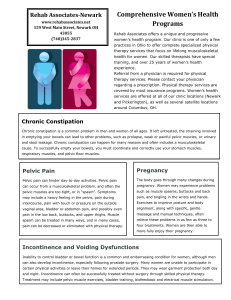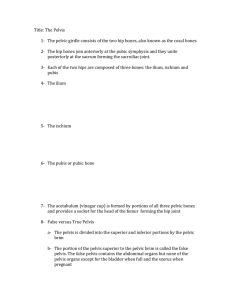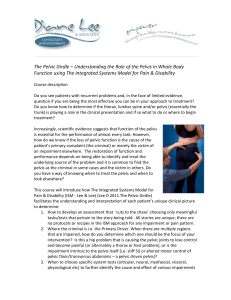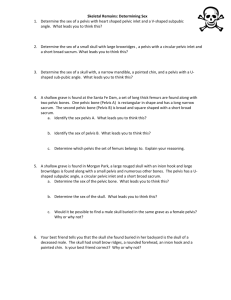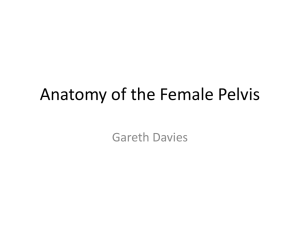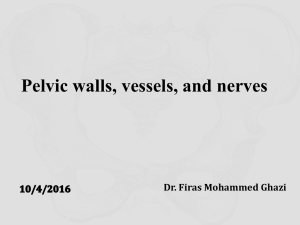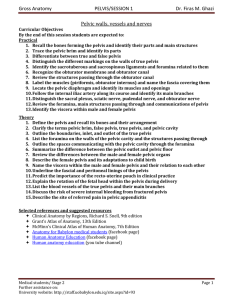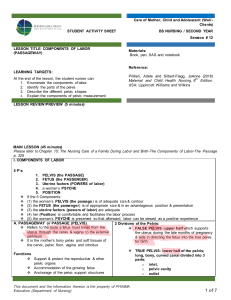Forever Strong Overview
advertisement
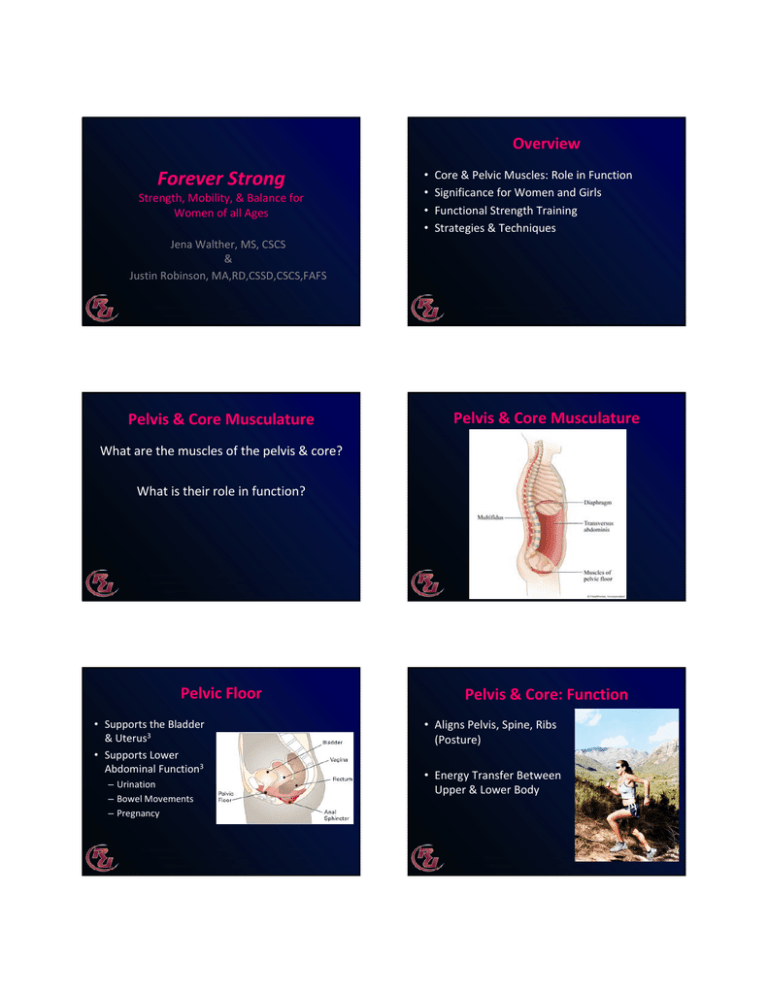
Overview Forever Strong Strength, Mobility, & Balance for Women of all Ages • • • • Core & Pelvic Muscles: Role in Function Significance for Women and Girls Functional Strength Training Strategies & Techniques Jena Walther, MS, CSCS & Justin Robinson, MA,RD,CSSD,CSCS,FAFS Pelvis & Core Musculature Pelvis & Core Musculature What are the muscles of the pelvis & core? What is their role in function? Pelvic Floor • Supports the Bladder & Uterus3 • Supports Lower Abdominal Function3 – Urination – Bowel Movements – Pregnancy Pelvis & Core: Function • Aligns Pelvis, Spine, Ribs (Posture) • Energy Transfer Between Upper & Lower Body Young Female Athletes • ACL Risk 4‐8x Greater in Young Female Athletes1,2 How are women across the lifespan affected by training the pelvis and core musculature? Pregnant Women • Easier Labor & Delivery4 – ↓ Episiotomy – ↓ Incontinence • Accelerated Post‐ Partum Weight Loss4 • Meyer, et al. 20051 & 20072 – 6 weeks of training – Significant decreases (28%) in knee valgus in young female athletes Older Women • Kim et al. 20115 –Older Women –Improved continence w/ core & pelvic training • Reduced Fall Risk • Independent Lifestyle 3‐D Training for Pelvis & Core Q: How can we ensure that we are effectively strengthening our pelvis and core musculature? A: By activating those muscles in 3 planes of motion! • Stretching /Strengthening the Core and Pelvic Floor in 3 Planes of Motion • Increased ROM & Muscular Strength • Improved Neuromuscular Activation Traditional Training • Kegel Exercises – Conscious or Voluntary – Concentric (muscles shorten) • How we Actually Move – Subconscious or Involuntary – Dynamic (Eccentric & Concentric) • Muscles lengthen then shorten 3‐D Exercises for the Pelvis & Core • • • • Squat Matrix Squat Reach Matrix Lunge w/ 3‐D Arm Drivers Shoulder Press – Shoulder Matrix – w/ 3D Foot Tweaks • Kneeling Lunge Matrix • Leg Kick Matrix http://youtu.be/UZTArUW8GyM References 1. 2. 3. 4. 5. Meyer, G.D., Ford, K.R., Palumbo, J.P., & Hewett, T.E. (2005). Neuromuscular training improves performance and lower‐extremity biomechanics in female athletes. Journal of Strength & Conditioning Research, vol 19, no. 1, 51‐60. http://www.ncbi.nlm.nih.gov/pubmed/15705045?dopt=Abstract Meyer, G.D., Ford, K.R., Brent, J.L., & Hewett, T.E. (2007). Differential neuromuscular training effects on ACL injury risk in “high risk” vs. “low risk” athletes. BMC Musculoskeletal Disorders, 8:39. http://web.ebscohost.com.libproxy.sdsu.edu/ehost/pdfviewer/pdfviewer?sid= 3deaf354‐bf9f‐4ee3‐b2ec‐ab123c1a8e84%40sessionmgr104&vid=12&hid=122 Talasz, H., Kalchschmid, E., Kofler, M., Lechleitner, M. (2011). Effects of Multidimensional pelvic floor muscle training in healthy young women. Archives of Gynecological Obstretrics, vol 285, no 3, 709‐715. Piper, T.J., Jacobs, E., Haiduke, M., Waller, M., & McMillan, C. (2011). Core training exercise selection during pregnancy. Strength and Conditioning Journal, 3;1, 55‐62. Kim, H., Yoshida, H., & Suzuki, Takao. (2011). The effects of multidimensional exercise treatment on community‐dwelling Japanese women with stress, urge, and mixed urinary incontinencez; a randomized control trial. International Journal of Nursing Studies, 48: 10, 1165 – 1172. http://www.sciencedirect.com.libproxy.sdsu.edu/science/article/pii/S00207489 11000812 Thank You! Questions? Take a Flyer! www.RehabUnited.com Additional Sources Ashton‐Miller, J.A. & DeLancey, J.O.L. (2007). Functional anatomy of the pelvic floor. Reproductive Biomechanics., vol 1101, 266‐296. DiBenedetto, P., Coidessa, A., Floris, S. (2008). Rationale of pelvic floor muscles training in women with urinary incontinence. Minerva Gynocologica, 60(6):529‐41. Gregory, A.L., Davies, L.A., Wolfe, M.F., & McKinnon, C. (2003). Joint SOGC/CSEP clinical practice guideline: exercise in pregnancy and the postpartum period. Canadian Journal of Applied Physiology, vol 28, no 3. K, Bo. (2003) Pelvic floor muscle training is effective in treatment of female stress urinary incontinence, but how does it work?International Urogynecology Journal, 15;2, 76‐84. Teitz, C.C., Hu, S.S., & Arendt, E.A. (1997). The female athlete: evaluation and treatment of sports‐related problems. Journal of the Academy of Orthopaedic Surgeons., vol 5, no 2, 87‐96. Wilson, J.D., Dougherty, C.P., Ireland, M.L., & Davis, I.M. (2005). Core stability and its relationship to lower extremity function and injury. Journal of the Academy of Orthopaedic Surgeons, vol 13, No 5, 316‐325.


